With September’s “Reinvention” issue of Paste Monthly, we got a little nostalgic in considering film history, both old and recent. Specifically, we found ourselves in conversations about films that had redefined movie genres—features that came along and made us think differently about every would-be imitator that came afterward, or ushered in a new era.
Each of these films in some way represents a tidal shift—the genre they’re in was forever altered afterward, either in the way future films were made or simply in the way audiences reacted to them or held expectations for them. Here are 12 films that reinvented their genres, presented in chronological order.
1. It Happened One Night, 1934
Genre: Romantic comedy
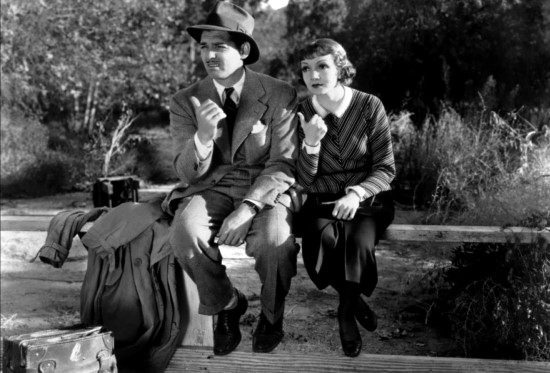
Frank Capra’s screwball romantic comedy really established the quintessential format for the lighthearted American romantic movie: Base it around a couple of stars with a great on-screen connection (even though Clark Gable and Claudette Colbert apparently didn’t get along too well behind the scenes), add some witty banter and a bit of raciness, and you’re most of the way there. The greatest contribution of It Happened One Night was likely in allowing Colbert’s comedic sensibilities and capability as a character to shine just as brightly as Gable’s—in that, it’s a surprisingly progressive film for its day. She of course gets the most famous and influential moment, when she shows up the know-it-all Gable by showing a little leg to successfully hitch a ride. That one moment has echoed through the romantic comedy genre ever since. Thankfully, it came about just before the MPAA began enforcing the Hays Code, or else that classic moment might never have left the cutting room floor.
2. Snow White and the Seven Dwarfs, 1937
Genre: Animated film
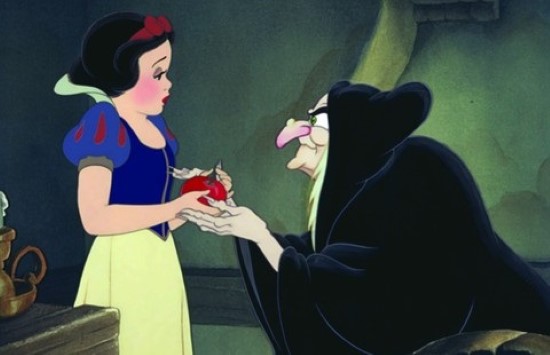
Snow White and the Seven Dwarfs was by no means the first major animated film, but it was the first full-length cel animated feature, and every animated feature afterward is its scion. Before Snow White, “cartoons” were simply part of the filler and previews one might see before an actual feature. Disney’s animation team showed what could be accomplished with an entire staff of talented artists working for an extended period on a united goal, and the film’s massive box office success proved that animated features were a valid and potentially lucrative business. Regardless, “animated film” implied an entirely different meaning in the post Snow White film industry.
3. Django, 1966
Genre: Western film

The Sergio Leone “man with no name” trilogy rightly gets all the attention as far as Italian spaghetti westerns go, but the original Django is the film you really want to show someone if you’re trying to codify what made spaghetti western a departure from the American western tradition. These were sure as hell not the singing, white velour-wearing cowboys of the Gene Autry era, nor were they the classic Western cowboys/sheriffs of films like Rio Bravo. These were dark, gritty, dirt-crusted gunfighters out for vengeance and blood, and Django himself is the quintessential spaghetti western avenger. There’s a reason why the character name was ripped off in more than 30 sequels)—he’s just the ultimate Italian western badass. The scene where he reveals what’s in the coffin he’s been dragging behind him through the entire film is an all-time classic—once you’ve seen that, it’s hard to accept the character archetype of the noble, selfless Western sheriff ever again.
4. Sweet Sweetback’s Baadasssss Song, 1971
Genre: Independent film/Black cinema
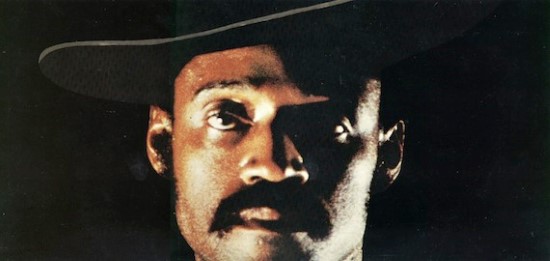
The genre that Sweet Sweetback’s Baadasssss Song reinvented was really that of independent filmmaking in general, even as it was at the same time the foundational film in establishing the idea of “blaxploitation.” It’s just a movie that no major studio of the day would have touched with a 10-foot pole—too scandalous, too sexual, too unorthodox and starring a predominantly black cast, it didn’t look like anything else one would see in theaters at the time. The film’s statement, as much as any of its social ones, was that a market did exist for these films. Despite being initially screened in only two theaters, it went on to make $4.1 million in its first theatrical release on a practically nonexistent budget, spurring a new generation of low-budget action films centered around black protagonists.
5. King Boxer, aka Five Fingers of Death, 1972
Genre: Kung fu film

Five Fingers of Death, as it was largely known in the U.S., is a turning point in the history of the kung fu genre, but one that has been overshadowed. Bruce Lee’s Enter the Dragon hit American cinemas later the same year and became a huge success, but the reason it found a market of new martial arts cinema fans was thanks to the sleeper success of Five Fingers of Death, a movie that no one in the American market saw coming. It was representative of a shift in the Hong Kong market for martial arts films, which had been dominated by more elaborate, historical and mythology-based wuxia pictures in the preceding years such as One-Armed Swordsman. The new generation, on the other hand, were more modern in their settings if not their storytelling, with a focus on hand-to-hand combat and secret techniques such as protagonist Chi-Hao’s “iron fist.” Regardless, this was the film that truly launched the early-to-mid ’70s kung fu craze in the United States, and spurred on the creation of new films back in Hong Kong, which had discovered a lucrative new American market.
6. Star Wars Episode IV: A New Hope, 1977
Genre: Science fiction film
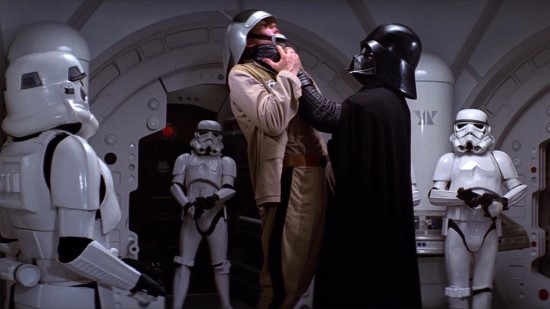
Before Star Wars, science fiction was such a different cinematic landscape. Outside of a few films like John Carpenter’s Darkstar, science fiction universes tended to be pristine, shiny and generally fantastical. The Star Wars universe, on the other hand, dropped audiences into an already ongoing story, in a setting that felt incredibly fleshed out, organic and lived-in. Things get dirty. The Millennium Falcon is full of dents and dings, like a real-world vehicle would be. It’s strange to call a science fiction universe “realistic,” but the setting for Star Wars simply felt more authentic than those that came before, and this is an often overlooked element of what made it a cultural phenomenon, along with groundbreaking FX work. The people who really had their work cut out for them were filmmakers who wanted to do sci-fi in a post-Star Wars world. The bar of expectations had been exponentially raised.
7. Jurassic Park, 1993
Genre: The “summer blockbuster”

Jurassic Park, in 1993, was an achievement in major league filmmaking. Like Star Wars before it, it was a quantum leap in visual effects—both physical and CGI, in this case. Most important, however, were those CGI advancements. Jurassic Park, for better or worse, probably represents the first moment in AAA Hollywood filmmaking where an audience could look at CGI-driven creatures, nod their heads, and simply accept them as part of the story—call it the moment where CGI graduated to the modern era. Married with one of the greatest pure adventure movies in Spielberg’s celebrated canon, Jurassic Park was representative of the spectacle we’ve come to expect in the traditional “blockbuster.” That loose term, since the days of Jaws, has always referred to a breed of films that are supposed to succeed by wowing us and making jaws drop. Jurassic Park did that in a way that infinitely raised expectations for every effects-driven blockbuster thereafter.
8. Toy Story, 1995
Genre: Animated film
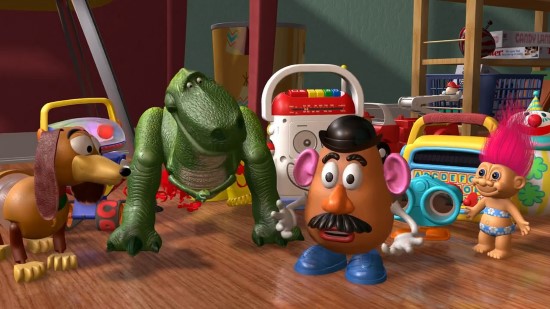
Toy Story holds as important a position in the history of animation as Snow White did—both films were concepts that audiences had never seen before. As in the Jurassic Park entry, this was the stage where a bit of technology stepped up and was fully incorporated for the first time, in this case computer animation. And like Jurassic Park, it took an exceptional team to harness the capabilities of the technology, specifically John Lasseter and Pixar. Looking back, it’s in some ways a little sad to see Toy Story as the beginning of the end for classic, hand-drawn animation, but it also ushered in an age of fantastical computer-generated imagery, much of it also from Pixar. The visual aesthetic of Toy Story became an industry standard, making the former standard into a relatively rare novelty.
9. Scream, 1996
Genre: Horror film
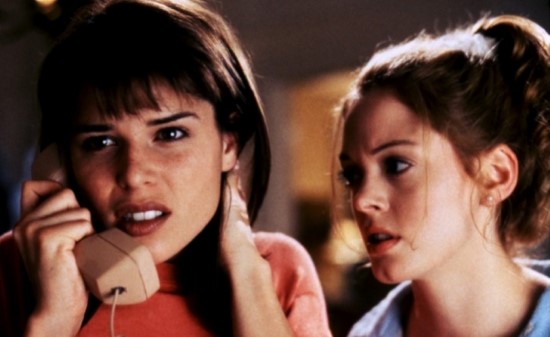
Scream really did a number on the horror genre in the winter of 1996. Simultaneously a paean to the classics and a rather damning criticism of the genre’s predictability, it reinvented its genre by demonstrating awareness of it. At the same time, as Scream revealed all the tropes of the genre to an audience of non-horror geeks, it was like letting them in on a treasure trove of secret knowledge. The film literally had an educational effect on its viewership—you saw Scream and left with a basic working knowledge of all the building blocks and tricks of the trade used in almost every slasher movie to that point. How then, could another film follow up Scream by falling back on those old tropes, now transformed into clichés? Most of the great horror films to follow after Scream, from Behind the Mask: The Rise of Leslie Vernon to The Cabin in the Woods, contain sizable parts of its DNA.
10. The Blair Witch Project, 1999
Genre: Horror film, independent film

Where Scream reinvented a genre by pulling the shades back to reveal the inner workings of horror, The Blair Witch Project went the opposite route by crafting a new style of presentation and especially promotion. Sure, people had already been doing found footage, just look at The Last Broadcast a year earlier. But this was the first to get a wide, theatrical release, and distributor Artisan Entertainment masterfully capitalized on the lack of information available on the film to execute a mysterious online advertising campaign in the blossoming days of the Internet age. Otherwise reasonable human beings seriously went into The Blair Witch Project believing that what they were seeing might be real, and the grainy, home movie aesthetic capture an innate terror of reality and “real people” that had not been seen in the horror genre before. It was also proof positive that a well-executed micro-budget indie film could become a massive box office success. So in that sense, The Blair Witch Project reinvented two different genres at the same time.
11. Crouching Tiger, Hidden Dragon, 2000
Genre: Wuxia film
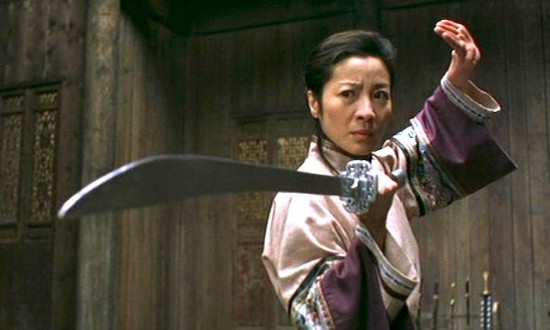
The wuxia genre isn’t terribly well understood in the West, but it differs notably from say, the kung fu craziness of the Shaw Brothers. Wuxia films are typified by period pieces and grand, sweeping ambitions. They’re more patient, more dignified and tend to feature heroes with a sense of chivalry, almost in the style of the European knight errant. At the same time, they’re also less realistic in the sense that they often incorporate a sort of magical realism, as Crouching Tiger, Hidden Dragon does, with combatants flying deftly through the treetops and performing feats that are clearly impossible. When this film because a surprise international success, it pumped new life into wuxia as a genre and demonstrated that these foreign-made films would find appreciative markets even if they weren’t in English. Rather, the films that followed Crouching Tiger learned a lesson of selling themselves through soaring visuals and beautiful simplicity—look at Hero or House of Flying Daggers that directly attempted to engage the same market.
12. Batman Begins, 2005
Genre: Superhero film

The modern era of profitable, popular, marketable superhero films that we’re still riding today really began with Bryan Singer’s X-Men in 2000 and arrived in earnest with Raimi’s Spider-Man in 2002. Although there were certainly missteps after, they had taken the concept of superhero films from being direct-to-video nerd fodder to genuine box office attractions. Batman Begins (and especially The Dark Knight after it), though, represented a totally different level of maturity. It treats its story with a seriousness and earnestness that just wasn’t present in the earlier films, which all seem to wink at the audience on some level and say “We’re just some harmless comic entertainment, folks”—I’m talking about stuff like Storm’s “toad hit by lightning” joke in X-Men. Christopher Nolan’s Batman films may have eventually become somewhat overwrought in their portentousness, but the first two took the kiddie gloves off a genre and left an indelible mark. “Grim and gritty” may actually be overplayed at this point, à la Man of Steel, but it was a desperately needed change of pace when Nolan’s Batman films helped the superhero genre rise to the next level.
Jim Vorel is Paste’s news editor. You can follow him on Twitter.